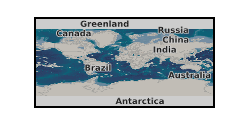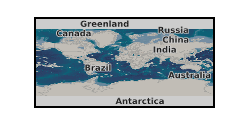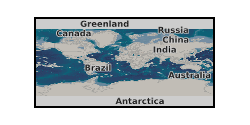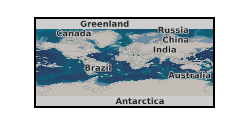Micropalaeontology
Type of resources
Available actions
Topics
Keywords
Contact for the resource
Provided by
Years
Formats
Representation types
Update frequencies
Scale
-

Age model tie points and micropalaeontological data for International Ocean Discovery Program Hole U1488A. Relative abundances of Neogloboquadrina acostaensis and six morphospecies of Pulleniatina (planktonic foraminifera) from the hole. Coiling ratios (% dextral) specimens for lineages of Pulleniatina with 95% confidence intervals. Supplementary data table to Pearson, Young, King and Wade (submitted), Biochronology and evolution of Pulleniatina. Table includes data relating to the Pulleniatina lineage from International Ocean Discovery Program Hole U1488A.
-

Microfossil samples submitted to the BGS biostratigraphy laboratory are currently registered using the prefix 'MPA'. Samples include rock, residues from sample preparations, and slides of mounted specimens. Rock, residues and slides from the same sample all bear the same unique identifying sample number. The numbers MPA 1 to 54400 have been used, but this grows steadily. There are currently 21 volumes of registered samples. The value added dataset comprises data for each sample held in the sample register, including collectors' symbols and numbers, 1:10k (or 6") OS quarter sheet, NGR, 1:50k (or 1") geological sheet, borehole name and depth (if relevant), locality, geological formation and report numbers. The value added dataset also includes identifications of specimens on each slide, which are listed on logging sheets and are held separately.
-

11 volumes of macrofossil and microfossil collections donated to IGS/BGS. Arranged sequentially in three series: LZ 1-10000 LZA 1-10000 LZB 1-10000 LZC 1-553
-

This dataset contains the low-resolution isotopic data (O & C) covering the last 1Ma, which is used to establish a more precise glacial-interglacial stratigraphy than the shipboard bio/paleomagneto stratigraphy for 2 NW Pacific Sites (IODP EXP350 1436C and 1437B) both were recovered at intermediate depths. The planktonic foraminifera census counts are used to assess the changes in surface water in the area affected by the Kuroshio Current. They are also used in concert with other sedimentological, micropaleontological or taphonomical evidences to estimate the changes in carbonate preservation at intermediate water depth in relation to changes in global ocean circulation during glacial interglacial cycles. Data report: Pleistocene planktonic foraminiferal oxygen and carbon stable isotope records and their use to improve the age model of Hole U1436C ores recovered east of the Aogashima Volcano, Maryline J. Vautravers
-

Data include geological logs and charts; letters, minutes & memos; notes; externally written reports; Internal reports; Research Reports; annotated publications, records and reports; and other miscellaneous documentation. Although some of the data go back to the first half of the 20th century (and rarely earlier), the bulk of the data refer to work carried out since about 1960. The data are filed under four subheadings: i. 1:50K sheet files (data relating to BGS mapping projects) for England & Wales, Scotland and Northern Ireland. ii. Offshore sheet files (data relating to BGS mapping projects) for the UK continental shelf and North Atlantic. iii. Offshore Quadrants (data relating to the hydrocarbons industry) (confidential). iv. Foreign biostratigraphy (in part confidential). v. General Palaeontology, Biostratigraphy & Taxonomy.
-

Microfossil samples submitted to the BGS are currently registered using the prefix 'MPA'. Samples include rock, residues from sample preparations, and slides of mounted specimens. Rock, residues and slides from the same sample all bear the same unique identifying sample number. The numbers MPA 1 to 51000 have been used, but this grows steadily. There are currently 21 volumes of registered samples.
-

Microfossils extracted from the original sample to be used as reference specimens. Some have been photographed. Original sample number, name of specimen, locality and geological horizon are given. PK1-378 have been used.
-

Analyses carried out mainly on Conodonts, but includes some foraminifera and ostracods. 10 volumes. Numbers used Mil(C)1-1079. The Carboniferous and Permian are included. Sample no, locality & geological information and in some cases identifications are given.
-

Samples from Scotland collected for A. Strank's PhD. Arranged by collectors' number (ARE and HR).
-

Microfossil analyses carried out offshore for hydrocarbons etc. Commercial in Confidence.
 NERC Data Catalogue Service
NERC Data Catalogue Service